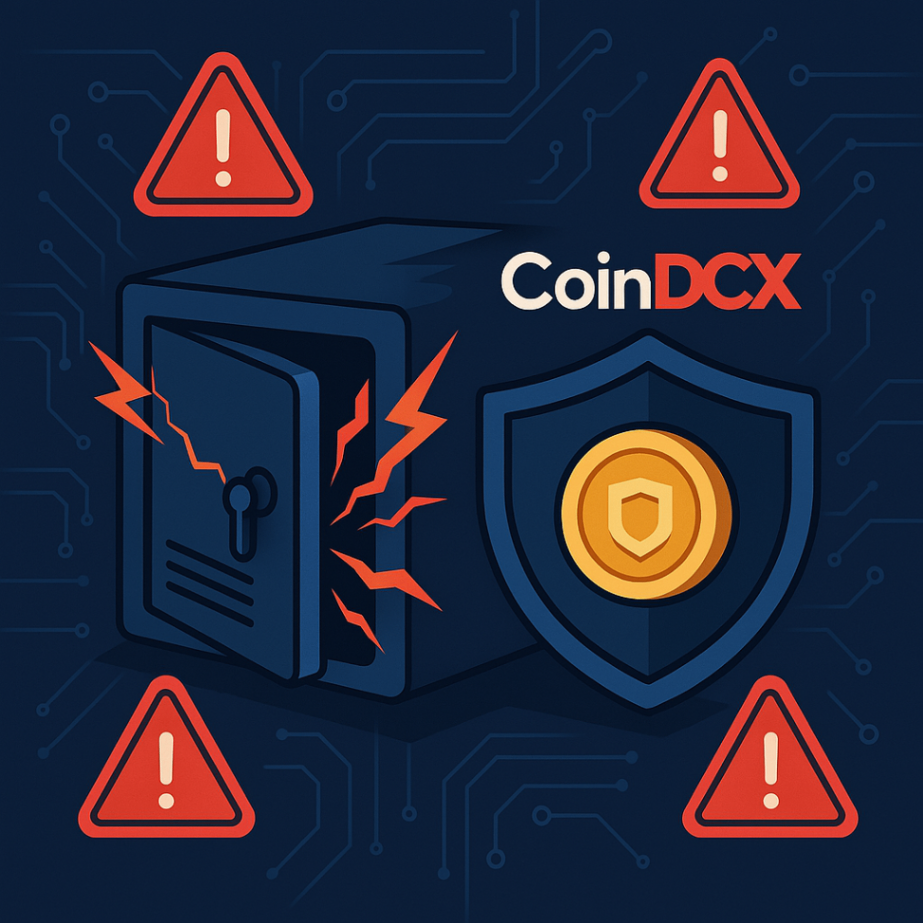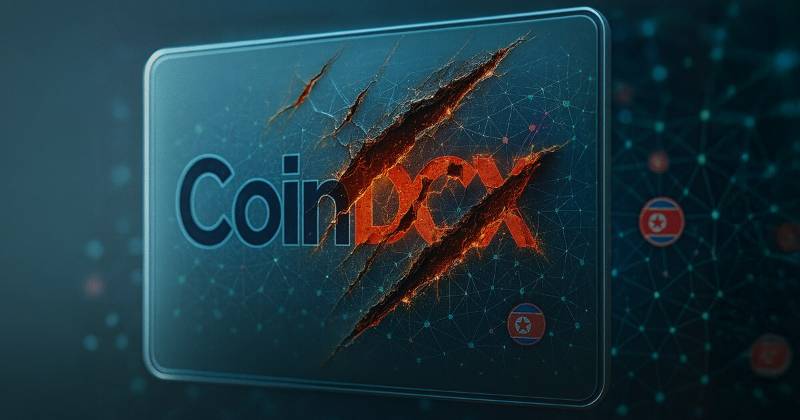The Breach: What Happened?
Indian cryptocurrency exchange CoinDCX confirmed a major security breach that led to the loss of approximately $44.2 million (INR 378 crore) from its internal treasury reserves. Occurring between July 18 and 19, the exploit was traced to a single operational wallet on the Solana blockchain, used for providing liquidity on a partner exchange. Notably, no customer funds were affected.
The incident was not a random or superficial attempt. It was a well-planned and precisely executed operation targeting CoinDCX’s backend infrastructure. The attacker(s) compromised an internal wallet used exclusively for liquidity provisioning, which was not directly connected to user wallets or exchange functions like deposits and withdrawals.
Attack Breakdown
The attackers targeted an internal operational wallet not linked to user funds. A sophisticated server-level breach allowed unauthorized access to sensitive infrastructure. Nearly $44.2 million was siphoned off, primarily in stablecoins like USDT and USDC. These funds were rapidly moved and bridged from Solana to Ethereum via Wormhole, and then swapped using the Jupiter aggregator.
In just minutes, roughly 155,830 SOL (valued at about $27.6 million) and 4,443 ETH (around $15.7 million) were routed into two main wallets. The use of high-speed, automated, and cross-chain transactions obscured their trail, making it nearly impossible to freeze or recover the assets in real time.

Immediate Response
CoinDCX responded swiftly. The compromised wallet was immediately isolated, preventing further loss. The platform publicly assured its 16 million+ users that no customer accounts or funds were affected. Operations, including trading and withdrawals, continued normally.
To reinforce its financial stability, CoinDCX confirmed it would absorb the entire loss from its own treasury reserves. Additionally, it brought in elite cybersecurity firms such as Sygnia, zeroShadow, and Seal911. CoinDCX is also working with ecosystem players like the Solana Foundation and CERT-In, India’s cyber emergency response team, to investigate and recover the stolen assets.
Recovery Efforts: India’s Largest Crypto Bounty
In a bold move, CoinDCX announced a $11 million bounty, up to 25% of any recovered funds. Ethical hackers, white-hat researchers, and cybersecurity professionals worldwide have been invited to assist in tracking the funds and identifying the culprits.
This initiative reflects the company’s commitment to not just resolving the issue, but turning it into a moment of community resilience and collaboration. The bounty program aims to bring attention to the value of collective intelligence in fighting cybercrime.
Who's Behind the Attack?
Investigators from blockchain security firm Cyvers believe the notorious Lazarus Group, linked to North Korea, may be behind the hack. Known for executing some of the most advanced attacks in Web3 history, this group likely used cross-chain tactics and obfuscation tools like Tornado Cash to conceal their tracks.
The operation reportedly took less than five minutes to complete. The attackers used blockchain bridges, privacy layers, and decentralized swaps, displaying a level of coordination and technical skill rarely seen outside nation-state cybercrime circles.
Lessons for the Industry
- Operational Wallet Risks: Even if user funds are stored in secure cold wallets, internal operational wallets can become significant points of failure if not protected with the highest level of scrutiny.
- Transparency and Crisis Handling: CoinDCX demonstrated a model response by quick isolation of the breach, immediate communication, and visible steps toward recovery. This kind of transparency helps maintain public trust, even during crises.
- Stronger Infrastructure Protocols: Crypto exchanges must move toward advanced security practices. These include multi-party computation (MPC) wallets, real-time intrusion detection, strict role-based access controls, and forensic-level monitoring across all chains.
- Regulatory Responsibility: This incident underscores the need for regulatory mandates around wallet segregation, breach disclosures, and regular third-party security audits. India's crypto landscape will likely see increased government scrutiny following this breach.
What CoinDCX Users Should Know
Your funds are safe. CoinDCX has confirmed that all user assets are intact, stored separately from the compromised wallet. The platform remains fully operational.
However, users should stay alert:
- Always enable 2FA and use strong passwords.
- Consider using cold wallets for large holdings.
- Follow updates only through verified CoinDCX sources.
- Beware of phishing scams or impersonators claiming to offer refunds or airdrops.
CoinDCX also intends to boost user education around wallet security and phishing awareness to build more cyber-resilient communities.

Final Thoughts
The $44 million breach at CoinDCX is not just a cautionary tale, it’s a turning point. It shows that even well-established platforms are vulnerable, and that operational security must be treated with the same rigor as customer-facing infrastructure. The silver lining lies in CoinDCX’s response: transparency, action, and community engagement. By launching India’s largest crypto bounty and pledging full compensation, CoinDCX has set a high bar for accountability in the Web3 world.
For India’s crypto future to thrive, platforms must double down on security, regulators must step in with clear guidelines, and users must remain vigilant. Because in crypto, trust isn't just code, it’s everything


Discussion
Start the conversation
No comments yet
Be the first to share your thoughts on this article. Your insights could spark an interesting discussion!